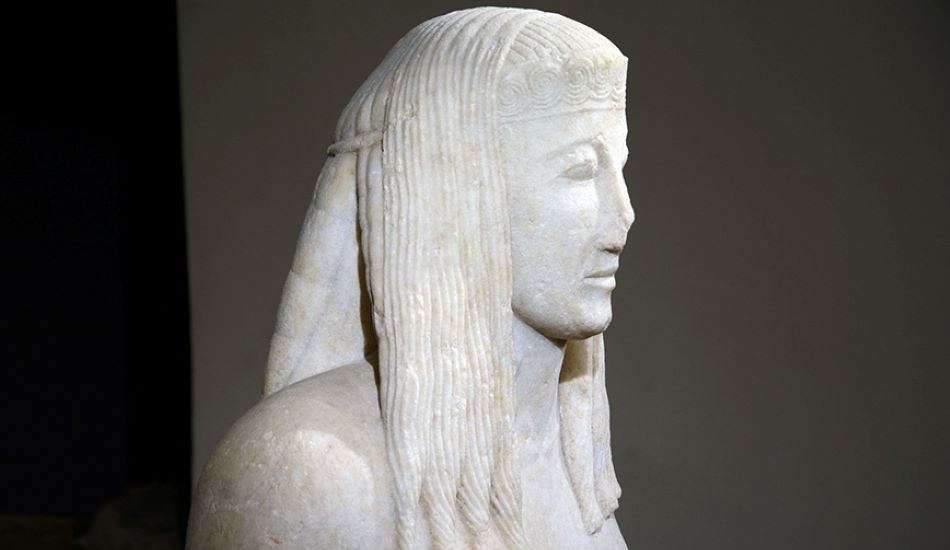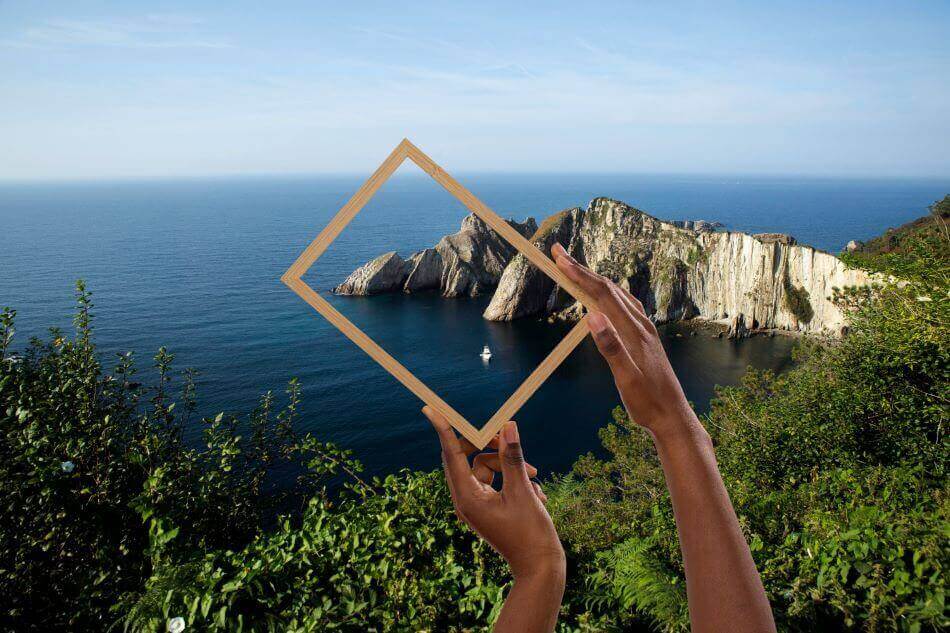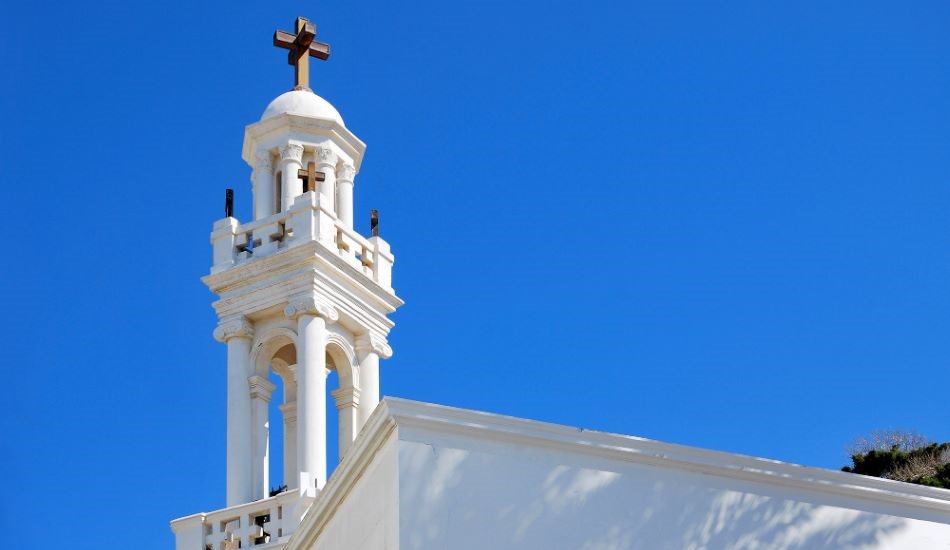

Sightseeing
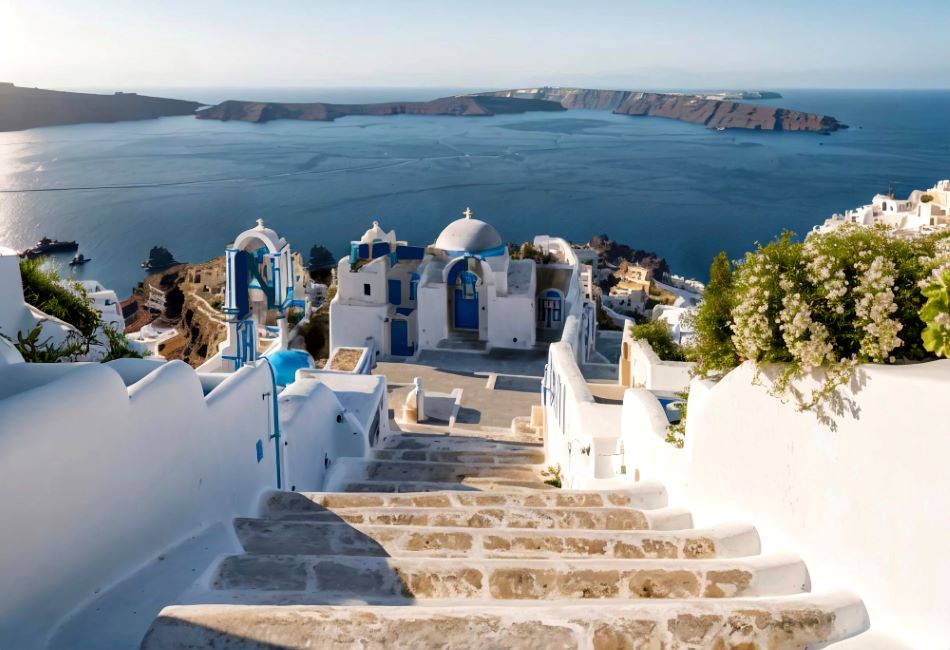
Santorini is one of the most beautiful islands of the Aegean Sea, renowned for its stunning sunsets, whitewashed buildings, and breathtaking views. Here’s a sightseeing itinerary to make the most of your visit:
Volcano
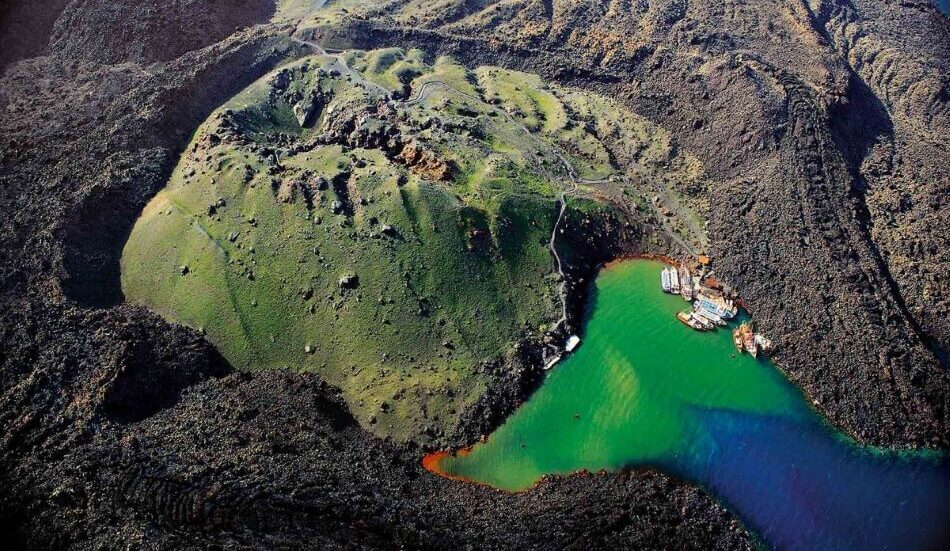
Santorini’s volcanic history is both captivating and significant. The island itself is essentially the remnants of a volcanic caldera, formed during one of the most significant volcanic events in recorded history. Approximately 3,600 years ago, a massive volcanic eruption occurred, causing the central portion of the island to collapse into the sea, thus creating the caldera. This cataclysmic event is widely believed to have inspired the legend of the lost city of Atlantis.
Despite this major eruption occurring thousands of years ago, Santorini remains an active volcanic center. Throughout history, there have been smaller eruptions and ongoing volcanic activity, with the most recent significant eruption recorded in 1950. Nea Kameni is the volcanic island situated at the center of Santorini’s caldera. It formed relatively recently, as a result of continuous volcanic activity. Visitors have the opportunity to take boat tours to Nea Kameni and hike to its summit, offering a close-up view of the volcanic landscape.
Additionally, Santorini’s volcanic activity has resulted in the presence of hot springs around the caldera. These thermal waters are rich in minerals and are believed to possess therapeutic properties. Many boat tours include stops at the hot springs, providing opportunities for swimming and relaxation. Santorini’s volcano holds great interest for scientists and researchers specializing in volcanology and geology. Ongoing monitoring and research efforts help to better understand the island’s volcanic activity and assess potential risks associated with it. The volcanic landscape of Santorini serves as a major attraction for tourists, who are drawn to the island to explore its unique geological features, marvel at the panoramic views from the caldera rim, and engage in activities such as hiking, boat tours, and visits to volcanic beaches.
Caldera
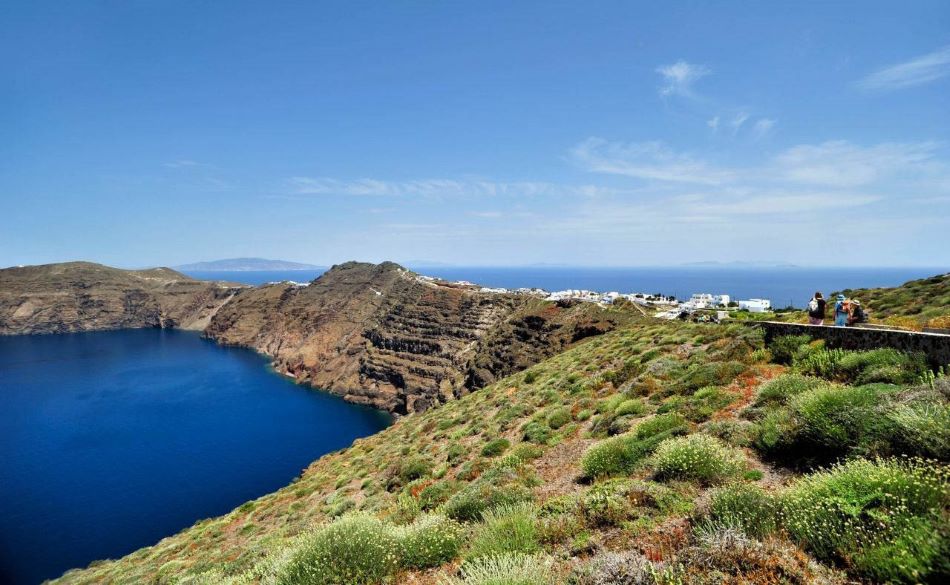
The caldera of Santorini formed by the collapse of the center of the island during a massive volcanic eruption around 3,600 years ago, the caldera of Santorini is a submerged crater, now partially filled by the Aegean Sea. Stretching approximately 12 kilometers in length and 7 kilometers in width, the caldera boasts steep cliffs that rise up to 300 meters above sea level. Its crescent shape is one of its defining characteristics.
The caldera showcases dramatic landscapes, with rugged terrain and azure waters. Within its confines lie smaller islands like Thirassia, Nea Kameni, and Palea Kameni, all formed through subsequent volcanic activity. Visitors flock to the caldera’s rim, particularly in towns such as Fira, Oia, and Imerovigli, to witness the breathtaking sunsets and sunrises that paint the sky in vibrant hues. The panoramic views truly awe-inspiring.
Tourism flourishes around the caldera, drawing people from across the globe who come to marvel at its natural splendor. Boat tours, hiking trails, and cable car rides provide various perspectives of this captivating landscape. The caldera holds immense scientific value, attracting geologists and volcanologists eager to study its geological formations and volcanic history. Ongoing research helps to monitor volcanic activity and assess potential risks.
Hot Springs
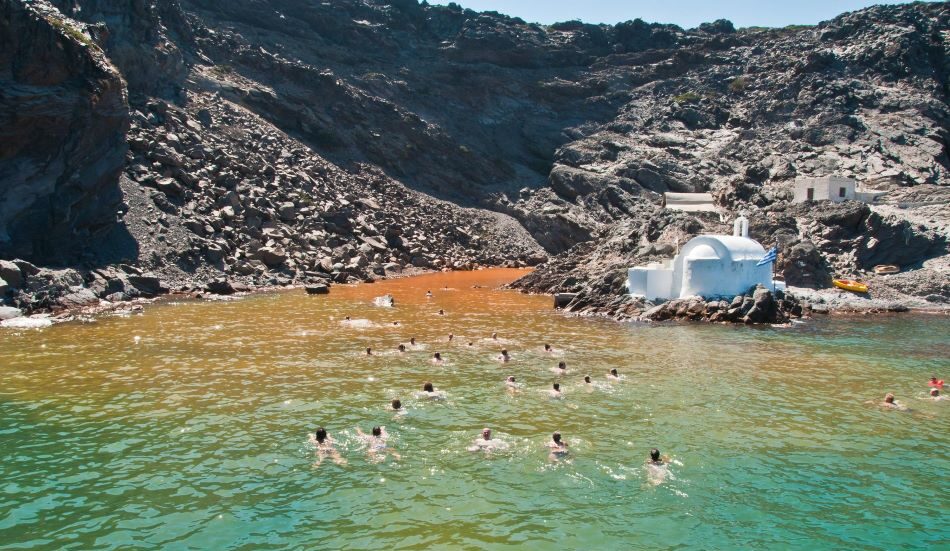
Santorini’s hot springs are located near the volcanic islands of Nea Kameni and Palea Kameni, within the caldera of Santorini. You can reach them by taking a boat tour from the ports of Fira, Athinios, or Ammoudi Bay in Oia. The hot springs owe their existence to the volcanic activity in the area. The warm waters are heated by geothermal energy from the volcanic activity beneath the surface, resulting in temperatures higher than the surrounding sea.
The mineral-rich waters of the hot springs are believed to have therapeutic properties, beneficial for the skin and overall well-being. The sulfur and other minerals in the water are thought to help with various skin conditions and joint pain.
Visitors can access the hot springs by swimming from the boat to the designated area. While some boat tours offer direct access to the hot springs, others anchor nearby, allowing passengers to swim to the hot springs from the boat. Swimming in the hot springs is a unique experience, especially contrasting with the cooler waters of the Aegean Sea. The waters are typically warmer closer to the source, gradually cooling as you move away. The distinctive orange-red color of the hot springs is due to the presence of sulfur and other minerals.
While the hot springs are generally safe for swimming, it’s essential to exercise caution, especially if you have any skin sensitivities or health concerns. It’s also advisable to rinse off in fresh water after swimming to remove any sulfur residue from the skin. A visit to the hot springs of Santorini offers a unique opportunity to relax, rejuvenate, and experience the island’s volcanic heritage in a truly memorable way.
Romantic Sunset

Experiencing a sunset in Santorini is undeniably romantic and unforgettable. Whether you decide to witness it from renowned spots like Oia or Fira, seek solitude at the Akrotiri Lighthouse, embark on a scenic boat tour, or indulge in a private dinner overlooking the Caldera, Santorini’s breathtaking beauty sets the stage for unforgettable romantic moments. The island’s sunsets paint the sky with a mesmerizing palette of colors, offering panoramic views and a serene ambiance that captures the essence of romance. Watching the sunset in Santorini is an experience that blends natural splendor with romance, creating cherished memories for couples to treasure for a lifetime.
Skaros Rock
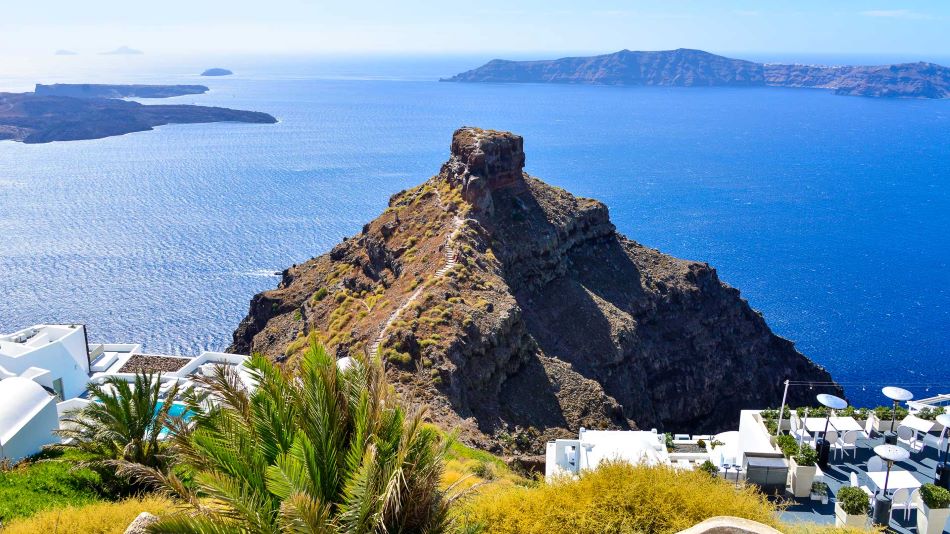
Skaros Rock is situated on the northern part of the island of Santorini in Greece, near the village of Imerovigli. Skaros Rock was originally chosen as the site for a fortress due to its strategic location. Built in the 13th century by the Venetians, the fortress served as a defensive stronghold against pirate attacks. Its position offered commanding views of the sea and the surrounding area, allowing defenders to spot incoming threats and protect the island’s inhabitants.
Although much of the original fortress has deteriorated over time, visitors can still see remnants of the structures that once stood on Skaros Rock. These include the ruins of houses, churches, and other buildings that formed part of the medieval settlement. Exploring these remnants provides insight into the island’s history and the lives of its past inhabitants.
Emporio Castle
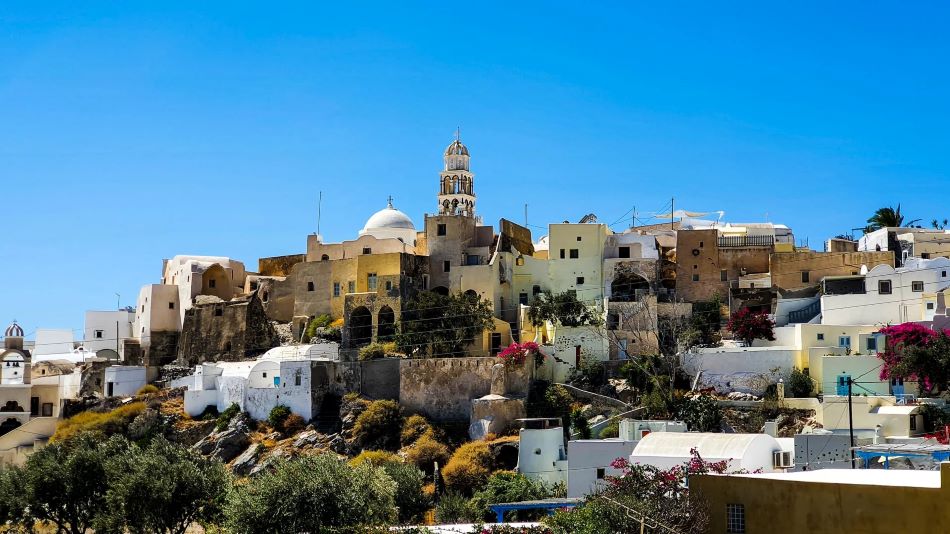
The Emporio Castle, also known as the Goulas of Emporio or Kasteli of Emporio, is a historic fortress located in the village of Emporio on the island of Santorini, Greece. The castle dates back to the medieval period when the island of Santorini faced threats from pirates and invaders. It was built by the Venetians in the 15th century as part of a network of fortifications to protect the island’s inhabitants. The castle served as a defensive stronghold and provided shelter for the local population during times of danger.
The architecture of the Emporio Castle reflects its strategic military function. It features thick stone walls, watchtowers, and narrow passages designed to impede enemy attacks. The layout of the castle is maze-like, with interconnected buildings and courtyards that served various purposes, including housing for soldiers, storage of supplies, and communal spaces for the residents. Over the centuries, the Emporio Castle has undergone restoration and conservation efforts to maintain its historical significance. While some parts of the castle remain in ruins, other sections have been partially restored, allowing visitors to explore its interior and gain insight into its past.
Today, the Emporio Castle is a popular tourist attraction on Santorini. Visitors can wander through the narrow streets and alleys of the castle, admiring its ancient architecture and imagining life within its walls centuries ago. The panoramic views from the top of the castle offer stunning vistas of the surrounding countryside and the Aegean Sea, making it a memorable stop for travelers exploring the island.
Ancient Thera
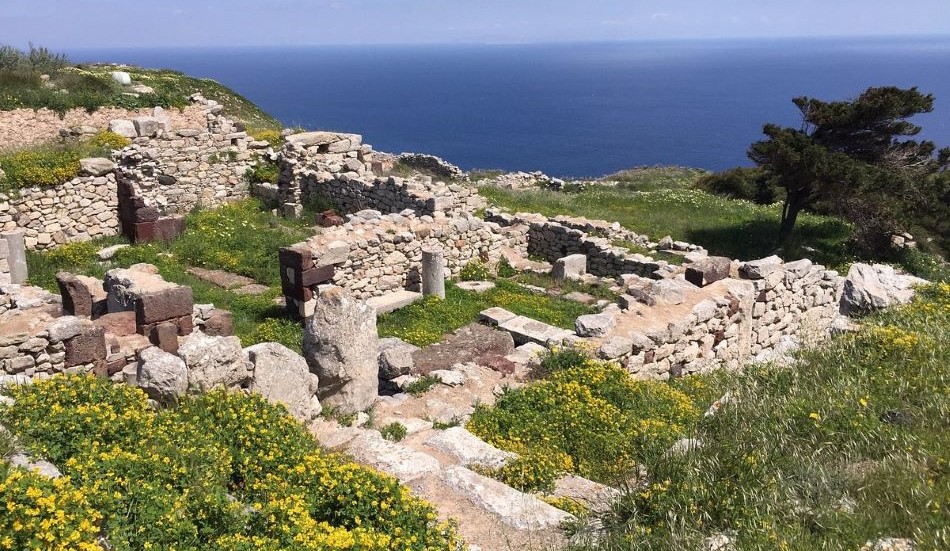
Ancient Thera is an archaeological site located on the Mesa Vouno Mountain on the island of Santorini, Greece. Ancient Thera was inhabited from the 9th century BC until the early Byzantine period. It was initially settled by Dorians who arrived on the island around the 9th century BC. The settlement was named after the mythical ruler Theras, who was believed to have led the Dorian colonists to Santorini.
The site was first excavated in the late 19th and early 20th centuries by German archaeologist Friedrich Hiller von Gaertringen. Subsequent excavations have been carried out, uncovering various structures and artifacts that provide insight into the life and culture of the ancient inhabitants. Ancient Thera features a variety of structures, including houses, temples, a theater, public buildings, and cemeteries. The layout of the city reflects its strategic location on the mountain slope, with terraces and retaining walls to maximize space and facilitate communication between different areas. The architecture and artifacts found at Ancient Thera reflect the cultural influences of various civilizations that inhabited the Aegean region, including the Minoans, Mycenaeans, and later Greek civilizations. The site provides valuable evidence of the interactions and exchanges between these cultures over the centuries.
Ancient Thera is significant not only for its archaeological remains but also for its historical and cultural importance. It offers visitors the opportunity to explore the ruins of an ancient Greek city and learn about the daily life, religious practices, and social organization of its inhabitants. The site also provides stunning views of the surrounding landscape and the Aegean Sea, making it a popular destination for tourists visiting Santorini.
Thirassia Island
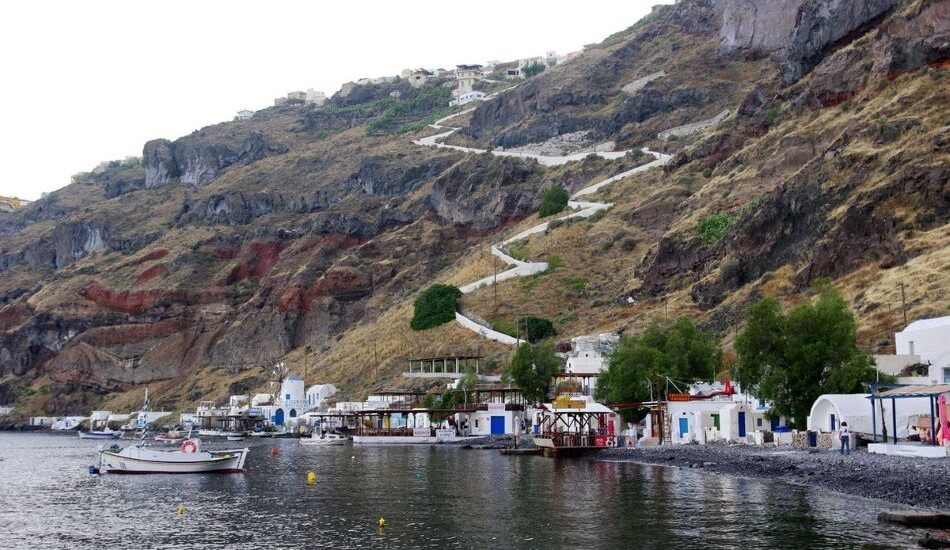
Thirassia Island is a charming and relatively untouched island located just west of Santorini in the Aegean Sea. Thirassia is part of the Cyclades Island group and is situated in close proximity to Santorini, separated only by a small strait. Despite its proximity to the bustling tourist destination of Santorini, Thirassia maintains a more traditional and tranquil atmosphere, making it an ideal destination for those seeking a quieter and more authentic Greek island experience.
Thirassia shares a similar geological history with Santorini, as both islands are remnants of a volcanic caldera created by a massive volcanic eruption in ancient times. Historically, Thirassia was inhabited by residents of Santorini who sought refuge on the island following the eruption. Over the centuries, Thirassia developed its own distinct identity and culture. Thirassia is home to several picturesque villages, including Manolas (also known as Chora), which is perched on a cliff overlooking the sea. Manolas features traditional Cycladic architecture, narrow cobblestone streets, and whitewashed houses adorned with colorful flowers. Visitors can explore the village’s charming alleys, visit local tavernas, and enjoy stunning views of the surrounding landscape.
Thirassia boasts beautiful beaches with crystal-clear waters and volcanic black sand or pebbles. Some of the most popular beaches on the island include Korfos Beach, Riva Beach, and Agia Irini Beach. Thirassia is an excellent destination for outdoor activities such as hiking, exploring ancient ruins, and enjoying traditional Greek cuisine. Visitors can hike to the top of Mount Profitis Ilias for panoramic views of the Aegean Sea and the neighboring islands, or visit the Monastery of Panagia for a glimpse into the island’s religious heritage. Additionally, Thirassia’s tavernas serve delicious fresh seafood and local specialties, providing a taste of authentic Greek cuisine.
Windmills
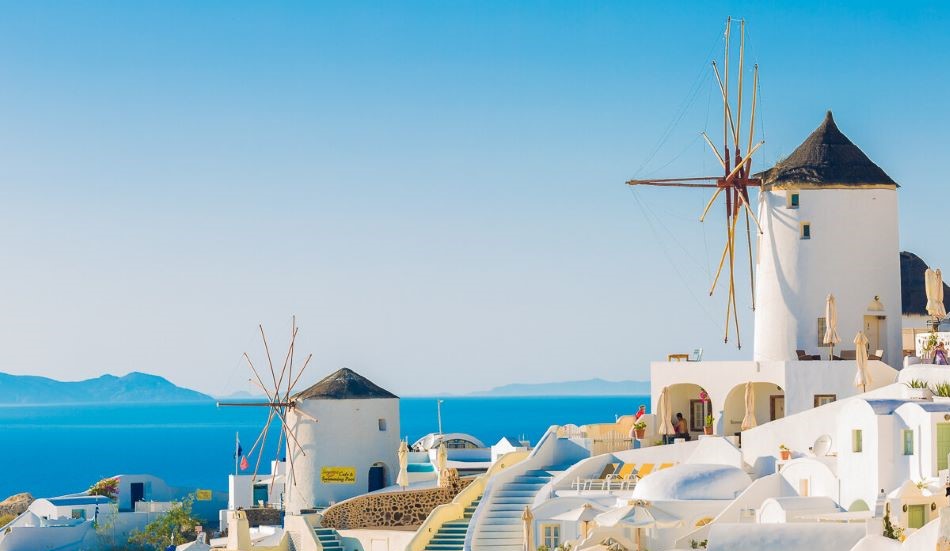
Windmills are iconic structures on the island of Santorini, adding to its picturesque charm and unique landscape. The windmills of Santorini have a long history dating back to the 16th century when they were built by Venetian settlers. These windmills were primarily used to grind wheat and other grains, playing a crucial role in the island’s agricultural economy.
Santorini’s windmills feature distinctive cylindrical or conical shapes, with white-washed walls and domed roofs. They typically have wooden or metal sails that catch the strong island winds, powering the grinding mechanism inside the mill. The windmills are scattered across various parts of Santorini, including the villages of Oia, Imerovigli, and Emporio. Many of them are located on elevated positions, offering panoramic views of the surrounding landscape and the Aegean Sea.
The windmills are not only functional structures but also cultural landmarks that symbolize the island’s agricultural heritage and traditional way of life. Although many of the windmills are no longer operational, they remain an integral part of Santorini’s identity and serve as popular tourist attractions.
Akrotiri Lighthouse
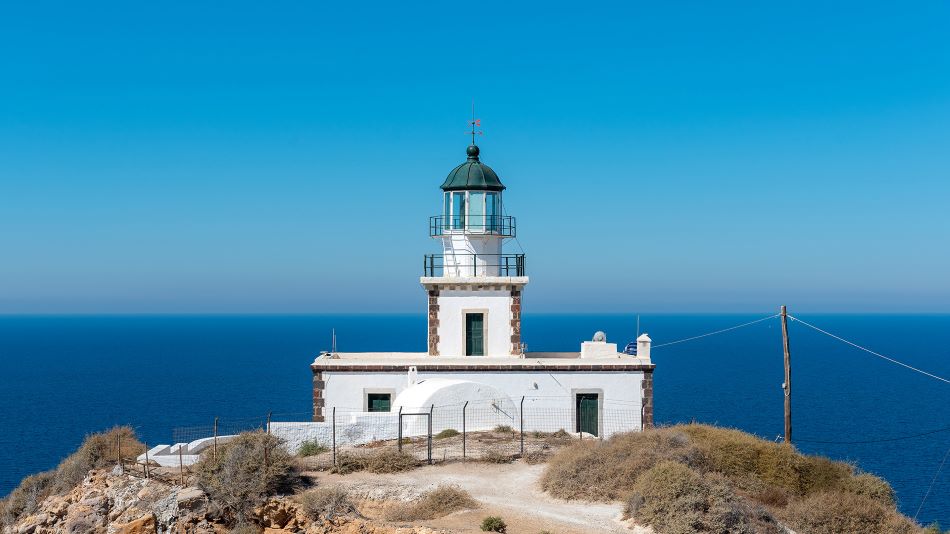
The Akrotiri Lighthouse, also known as the Faros Lighthouse, is a historic landmark located on the southern tip of the Greek island of Santorini, near the village of Akrotiri.The Akrotiri Lighthouse was constructed in 1892 by the French Company of Ottoman Lighthouses. It was built to help guide ships navigating the treacherous waters surrounding Santorini, which has a long history of maritime activity and trade.
The lighthouse is a cylindrical tower made of stone and stands at a height of approximately 10 meters. It features a classic design with a white exterior and a red domed roof.
Originally, the lighthouse was equipped with a Fresnel lens, which emitted a powerful beam of light visible from a distance at sea. Throughout its history, the Akrotiri Lighthouse served as an important navigational aid for ships traveling through the Aegean Sea. Its light helped vessels safely navigate the rocky coastline of Santorini, especially during nighttime or periods of low visibility due to weather conditions.
The lighthouse is situated on a rocky promontory overlooking the caldera of Santorini and the surrounding sea. Its elevated position offers panoramic views of the island’s dramatic coastline and the azure waters of the Aegean.
Kasteli Castle
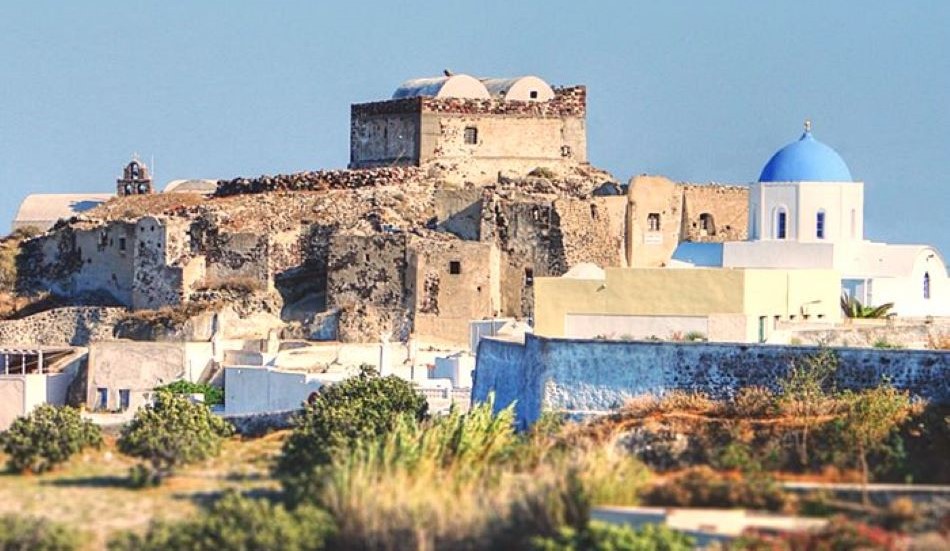
The Kasteli Castle, also known as the Pyrgos Castle or Castelli of Pyrgos, is a historic castle located in the village of Pyrgos on the island of Santorini, Greece. The Kasteli Castle dates back to the medieval period and was constructed during the Venetian occupation of Santorini, which lasted from the 13th to the 16th centuries. It served as a defensive fortress to protect the village of Pyrgos and its inhabitants from pirate raids and other threats.
The castle is situated atop a hill in Pyrgos and features typical Venetian fortification architecture, including thick stone walls, battlements, and towers. Its strategic location provided panoramic views of the surrounding landscape, allowing defenders to spot approaching enemies. In addition to its defensive role, the Kasteli Castle also served as a administrative center and a place of refuge during times of conflict. It housed government offices, storage facilities, and living quarters for soldiers and officials.
Over the centuries, the Kasteli Castle has undergone periods of restoration and renovation to maintain its historical significance. Today, visitors to Pyrgos can explore the castle ruins and learn about its history and cultural importance. The Kasteli Castle is a popular tourist attraction in Santorini, drawing visitors who are interested in history, architecture, and panoramic views. The village of Pyrgos, with its traditional Cycladic architecture and winding alleys, is also worth exploring, offering visitors a glimpse into the island’s rich cultural heritage.
Bellonio Cultural Centre

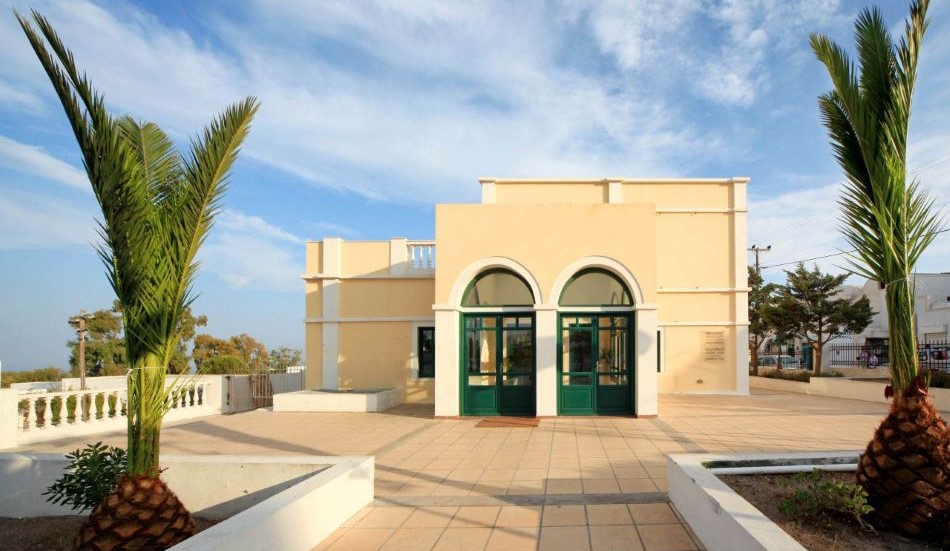
The Bellonio Cultural Centre is a notable cultural institution located in Fira, the capital of the beautiful Greek island of Santorini. The Bellonio Cultural Centre was established in 1976 by the Greek benefactor Evangelos Bellonias. Its primary purpose is to promote and preserve the cultural heritage of Santorini and the wider Cyclades region.
The centre is dedicated to fostering cultural exchange, artistic expression, and educational initiatives. It serves as a hub for various cultural activities, including exhibitions, concerts, theatrical performances, lectures, and workshops. The Bellonio Cultural Centre features modern facilities equipped to host a wide range of cultural events. These include exhibition spaces, a theater, conference rooms, and a library. The center’s versatile spaces accommodate both large-scale productions and intimate gatherings.
Throughout the year, the Bellonio Cultural Centre organizes a diverse program of cultural events that showcase the artistic talent and cultural heritage of Santorini and the Cyclades. These events attract locals and visitors alike, contributing to the vibrant cultural scene of the island. The centre actively engages with the local community by offering educational programs, cultural initiatives, and opportunities for creative expression. It serves as a platform for artists, performers, scholars, and cultural enthusiasts to come together and celebrate the rich cultural traditions of Santorini and the Cyclades.
Nikos Nomikos Street
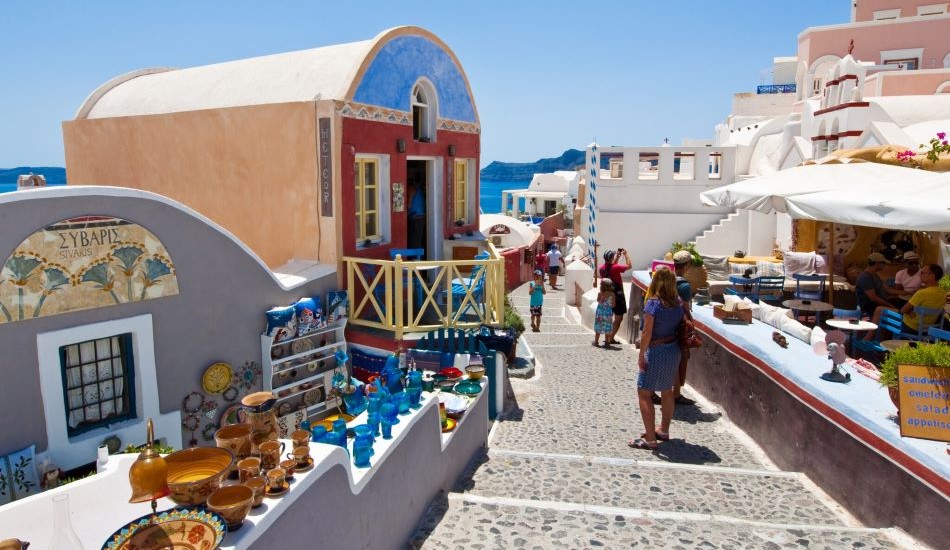
Nikos Nomikos Street is a notable thoroughfare located in the town of Fira on the island of Santorini, Greece. Nikos Nomikos Street is named after Nikos Nomikos, a prominent figure in Santorini’s history. The street is lined with shops, cafes, restaurants, and boutique hotels, making it a vibrant and bustling area. Visitors often stroll along Nikos Nomikos Street to explore its charming shops, enjoy local cuisine, and take in the scenic views of the surrounding area.
In addition to its commercial establishments, Nikos Nomikos Street also offers easy access to several key attractions in Fira, including the Archaeological Museum of Thera and the Orthodox Metropolitan Cathedral. Its central location and lively atmosphere make it a popular destination for both tourists and locals alike.
Explore Santorini with your own vehicle

Santorentals offers excellent car rental services in Santorini. With a car rental, atv rental or scooter rental, you can explore the island at your own pace and discover all its hidden beauties and unique attractions. From the beautiful villages to the amazing beaches and historical sights, you will have the freedom to explore everything that makes Santorini so magical!


